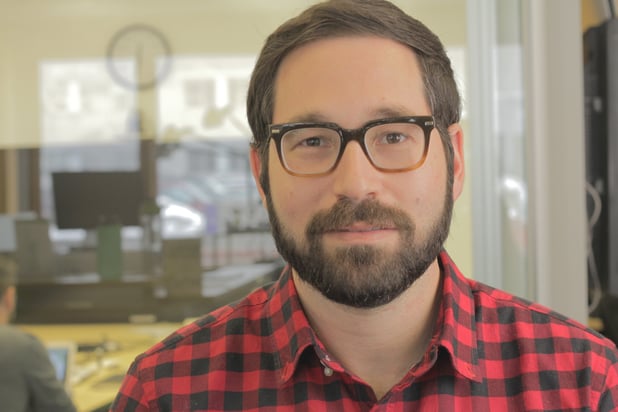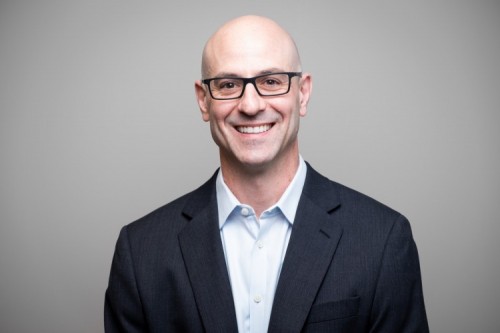

The wave of insurtechs that emerged in the early 2010s boldly promised to disrupt and transform the industry, conquering long-standing players along the way that were slow to change.
That era saw the birth of companies such as Lemonade, a digital insurance start-up with bravado promising to disrupt the industry and make insurance agents obsolete.
Today, Relativity6 is among the new roster of insurtech start-ups gaining traction. The company, unlike Lemonade, is not promising to change the world. Instead, it wants to improve the process underwriters go through by verifying business identities with a fast and accurate digital tool. It targeted a single problem and came up with a solution. Relativity6’s approach helped it secure more than $5 million in VC financing in April.
“You’re solving for a specific actual need and there’s a high willingness to pay, especially if it’s the right problem you’re solving for,” said Relativity6 CEO and co-founder Alan Ringvald (pictured above) said.
In other words, newer insurtech start-ups are improving individual processes rather than changing the world.
Investors and industry insiders don’t expect bold and brassy insurtech start-ups to evaporate entirely from the marketplace. Ringvald himself said “there’s still a lot of moonshots out there.” Many seem to agree, however, that more newer start-ups are aiming for practicality rather than bold pronouncements. They build their identities around improving one element of the insurance industry that would benefit from a modern approach.
Investors are responding, with start-ups focused on improving underwriting processes, white label platforms for brokers, and claims processes all securing venture capital investment in recent months.
That matters especially under the current economic climate where the public markets have turned sour on tech start-ups in insurance and other sectors. Lemonade, Root and Hippo are among the bolder insurtech start-ups that went public, and all have seen drastic stock price drops over the last year. Because of the market turmoil, venture capitalists have also pulled back, with insurtech investment plunging in the 2022 first quarter according to some industry reports.
Old school carriers are also driving the trend as they seek to boost efficiency in their processes and partner with outside tech players to get the job done efficiently.
Tom Walker (pictured immediately below), president and CEO of Rev1 Ventures, confirmed he’s seen a lot of investor deals focus on companies that target smaller process improvements rather than the entire insurance industry.

“It’s a real trend,” Walker said. “You’ll see increasing [venture capital] opportunities during the downtime in a market like this because you have a clear path to a customer and a clear path to a market, so you can be more capital efficient when you’re starting your company, because you can reach out to those existing industry players and have them pilot and test your products.”
According to Walker, established companies in multiple industries including insurance are searching for more ways to innovate internally, and partnering with innovative start-ups has become a sensible way to go.
“When you know they’re 100-plus-year-old companies, sometimes changing that culture is hard to do within,” Walker said. “You can partner with entrepreneurs that have processes or systems that can help your existing business innovate. Sometimes that’s a quicker win.”
This trend has been the case for several years now, but the momentum has increased with a downturn in the VC investor market, Walker noted. The reason: aiming at smaller scale start-ups trying to help existing companies grow and improve can make financial sense.
Investors “can be more capital efficient in building companies that are targeting existing industries like that,” Walker said. “They don’t have to raise as much money and it’s quicker to market.”
Targeted, narrowly focused start-ups have an easier go of it than insurtech start-ups such as Lemonade and Root that promise to be big disruptors of the entire insurance industry, according to Erik Ross (pictured immediately below), head of venture capital and mergers and acquisitions for Nationwide Insurance. Their path to profitability takes longer, he said, and hitting the public markets has left many with material stock pressures from high interest rates, inflation, COVID-19 and supply chain overhang.

Under those pressures, some insurtech start-ups have gone for more measured targets, Ross said, such as becoming a software-as-a-service (SaaS) company with a goal of improving a particular process in the value chain.
“The ultimate metric is survival no matter what,” Ross said. “Just seeing as how public market investors are taking a look at the current insurtechs, it would appear at this time that you may be better off from a valuation perspective being a technology [start-up] that could sell to many of the incumbents … rather than just saying that you’re going to be a carrier that [will] disrupt the whole industry.”
Simon Torrance (pictured immediately below) is the UK-based founder of Embedded Finance & Super App Strategies, which specializes in embedded insurance. He said that venture capitalists are increasingly seeing a “smarter opportunity to provide more of the plumbing” for advances such as embedded insurance, rather than for direct-to-consumer digital insurers such as Lemonade or Hippo.

By pursuing the former option, the focus is on insurtech infrastructure for B2B dynamics rather than direct to consumer. In the end, he said, investors may view the change as more cost-effective.
“The direct-to-consumer businesses soak up or require enormous investment … so you’ve got to try and attract customers who’ve never heard of you,” Torrance said. “That requires huge spend and advertising and so on, and the way to get customers tends to be that you offer a better deal.”
But that tends to be risky, Torrance said, because the customer wins could bring riskier clients to the insurer than those the incumbent carriers have and more often keep. Riskier clients, he noted, can be costly because of their financial track records.
Focusing on insurance industry infrastructure avoids those extra costs, Torrance said, and he expects investment in insurtech infrastructure companies to continue as a result.
“Infrastructure is growing at 74% per annum in terms of investment increases,” Torrance said. By the same token, direct to consumer tech investments have been at 15% annually.
Kissterra is another insurtech start-up that has launched in recent years with a narrow but important focus: software to help insurers target marketing efforts for their key audience. The company has focused early on the US auto insurance market.
“We have an end-to-end cloud-based [product] to help insurance providers be more profitable and efficient with their digital marketing and distribution,” explained Ifty Kerzner (pictured immediately below), Kissterra’s co-founder and president.

Kerzner said his company’s targeted approach has been the right choice, contrasting with some insurtechs trying to do multiple things at once.
“The thought of ‘we can do everything in a short period of time and change the way people have been buying insurance in three to five years’ was deemed impossible, I think, from the get-go,” Kerzner said. Targeting a specific problem to solve, he added, is universally promising.
“I would advise anybody up and coming to try because the problem [of modernizing insurance] is so big, and it’s built out of so many moving parts that if you can find how to do one single thing better than everybody else and you have a valid business model, you can actually be profitable and have the sustainability to go through any kind of market conditions,” Kerzner said.
Ringvald said that the approach has worked for Relativity6, as the company “is growing exponentially at the moment.”
“We’ve been scaling since Q4 of last year [and] we can continue to onboard carriers, comparative raters, wholesalers, brokers – everyone across the insurance value chain,” Ringvald said.
It may be smarter during the volatile market to work for more immediate returns now, he added.
“The market the way it is today, the focus on actually doing something that you can get paid for today versus in 5-10 years from now is much more attractive, not only to start-ups but obviously the funders as well,” Ringvald said. “The VCs that back these companies, they’re starting to look for more short-term wins, as opposed to ‘let’s keep fueling and funding something that is more of a moon shot and we don’t know where it is going to go.’”
Opinions vary as to whether the investment shift to more narrowly focused insurtech start-ups is a permanent one.
From Ringvald’s perspective, the trend will likely go on as long as investor market turmoil continues.
“A lot of founders or start-ups will kind of go how the market goes and look at those signals,” Ringvald said.
He added the shift isn’t necessarily a bad thing, leaving the insurance industry with more measured start-ups that can start solving one problem and build from there.
“I don’t think this will eliminate the moon shot, but a lot more companies will be born out of solving one specific problem and then moving up the ladder, [instead of] vice versa, which it has been for a long time,” Ringvald added.
Ross offered similar sentiments, noting that there is always room for a start-up with large ambitions such as what Lemonade and Root brought to the table. The question hasn’t been answered yet, he added, whether investors will permanently give preference to start-ups that solve a single problem rather than trying to target most of them at once.
Walker said he expects an accelerated investor shift toward insurtech start-ups promising to solve a single industry problem.
“You’re going to see increased momentum,” he said. “It’s the part of the industry to watch over the next couple of years. “We’re hopeful to see more of these types of companies close [investment] rounds in a capital-efficient manner and really disrupt the industry.”
